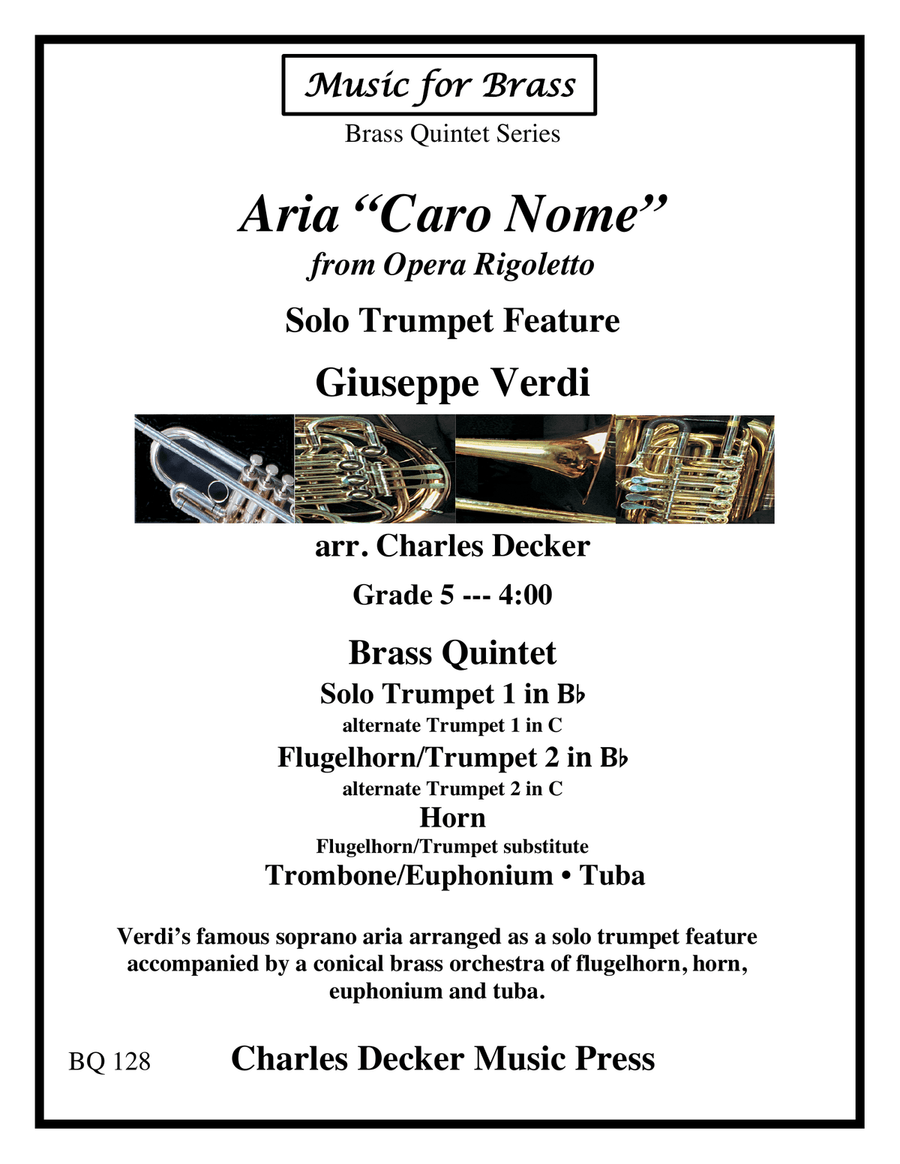Brass Quintet Euphonium,Flugelhorn,Trombone,Trumpet,Tuba - Level 4 - Digital Download SKU: A0.817129 Composed by Giuseppe Verdi. Arranged by Charles Decker. 19th Century,Chamber,Multicultural,Opera,Romantic Period,World. 32 pages. Charles Decker Music Press #3566235. Published by Charles Decker Music Press (A0.817129). Giuseppe Verdi's familiar soprano aria from his opera Rigoletto now arranged as a solo feature for one of the quintet's trumpeters accompanied by an orchestra of conical brass - flugelhorn, horn, euphonium and tuba. Alternate trumpet parts in C are provided for both trumpeters and a flugelhorn/trumpet substitute part for horn. The audio file is an actual brass quintet performance of the entire work and not a computer playback of the score. If looking for more trumpet solo features with brass quintet see Charles Decker Music Press SMP editions of Clarkeâs Carnival of Venice, Sasche Concertino for Eb Cornet of 1871 , and opera arias by Puccini Che Gelida Manina from La Boheme , and Rossini Non Piu Mesta from Cinderella. Use this link to Kendor Music for my trumpet feature brass quintet arrangements of Clarkeâs Bride of the Waves and Nesticoâs Portrait of a Trumpet. See more than 70 mixed brass ensemble publications with Charles Decker Music Press at Sheet Music Plus for inexperienced to advanced musicians with music ranging from the Renaissance to contemporary new works for trios, quartets, quintets, brass choir and brass band. Many of the mixed brass ensemble editions include alternate and substitute parts being alternate C trumpet parts for B-flat trumpet parts, flugelhorn/trumpet substitute for horn, horn substitute for trombone and treble clef euphonium substitute for trombone. See also 50+ homogeneous brass group editions with Charles Decker Music Press at Sheet Music Plus for horn, trumpet and trombone ensembles. Check out the Music of Black Composers Series with Charles Decker Music Press at Sheet Music Plus with 25 arrangements for mixed brass ensembles ranging from early jazz to symphonic works with composers Samuel Coleridge-Taylor, R. Nathaniel Dett, William Grant Still, Will Marion Cook, James Reese Europe, James Johnson and others. All ensemble publications include recordings of the entire edition.  For more Charles Decker brass quintet editions use these links to Kendor Music and Cherry Classics Music for listings of my arrangements of music by J.S. Bach, H.L. Clarke, Debussy, Dukas, Elgar, Falla, Holst, Ives, Nestico, Rachmaninoff, Satie, and Tchaikovsky.
